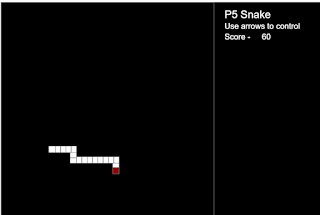Namespace in C++ | Set 1 (Introduction)
Consider following C++ program.
// A program to demonstrate need of namespaceint main(){ int value; value = 0; double value; // Error here value = 0.0;} |
Output :
Compiler Error: 'value' has a previous declaration as 'int value'
In each scope, a name can only represent one entity. So, there cannot be two variables with the same name in the same scope. Using namespaces, we can create two variables or member functions having the same name.
// Here we can see that more than one variables // are being used without reporting any error.// That is because they are declared in the // different namespaces and scopes.#include <iostream>using namespace std;// Variable created inside namespacenamespace first{ int val = 500;}// Global variableint val = 100;int main(){ // Local variable int val = 200; // These variables can be accessed from // outside the namespace using the scope // operator :: cout << first::val << '\n'; return 0;} |
Output:
500
Namespaces allow us to group named entities that otherwise would have global scope into narrower scopes, giving them namespace scope. This allows organizing the elements of programs into different logical scopes referred to by names.
- Namespace is a feature added in C++ and not present in C.
- A namespace is a declarative region that provides a scope to the identifiers (names of the types, function, variables etc) inside it.
- Multiple namespace blocks with the same name are allowed. All declarations within those blocks are declared in the named scope.
A namespace definition begins with the keyword namespace followed by the namespace name as follows:
namespace namespace_name
{
int x, y; // code declarations where
// x and y are declared in
// namespace_name's scope
}
- Namespace declarations appear only at global scope.
- Namespace declarations can be nested within another namespace.
- Namespace declarations don’t have access specifiers. (Public or private)
- No need to give semicolon after the closing brace of definition of namespace.
- We can split the definition of namespace over several units.
// Creating namespaces#include <iostream>using namespace std;namespace ns1{ int value() { return 5; }}namespace ns2 { const double x = 100; double value() { return 2*x; }}int main(){ // Access value function within ns1 cout << ns1::value() << '\n'; // Access value function within ns2 cout << ns2::value() << '\n'; // Access variable x directly cout << ns2::x << '\n'; return 0;} |
Output:
5 200 100
Following is a simple way to create classes in a name space
// A C++ program to demonstrate use of class// in a namespace#include <iostream>using namespace std;namespace ns{ // A Class in a namespace class geek { public: void display() { cout << "ns::geek::display()\n"; } };}int main(){ // Creating Object of student Class ns::geek obj; obj.display(); return 0;} |
Output:
ns::geek::display()
Class can also be declared inside namespace and defined outside namespace using following syntax
// A C++ program to demonstrate use of class// in a namespace#include <iostream>using namespace std;namespace ns{ // Only declaring class here class geek;}// Defining class outsideclass ns::geek{public: void display() { cout << "ns::geek::display()\n"; }};int main(){ //Creating Object of student Class ns::geek obj; obj.display(); return 0;} |
Output:
ns::geek::display()
We can define methods also outside the namespace. Following is an example code.
// A C++ code to demonstrate that we can define // methods outside namespace.#include <iostream>using namespace std;// Creating a namespacenamespace ns{ void display(); class geek { public: void display(); };}// Defining methods of namespacevoid ns::geek::display(){ cout << "ns::geek::display()\n";}void ns::display(){ cout << "ns::display()\n";}// Driver codeint main(){ ns::geek obj; ns::display(); obj.display(); return 0;} |
Output:
ns::display() ns::geek::display()
This article is contributed by Abhinav Tiwari. If you like GeeksforGeeks and would like to contribute, you can also write an article and mail your article to contribute@geeksforgeeks.org. See your article appearing on the GeeksforGeeks main page and help other Geeks.
Please write comments if you find anything incorrect, or you want to share more information about the topic discussed above
#COPIED





No comments:
Post a Comment